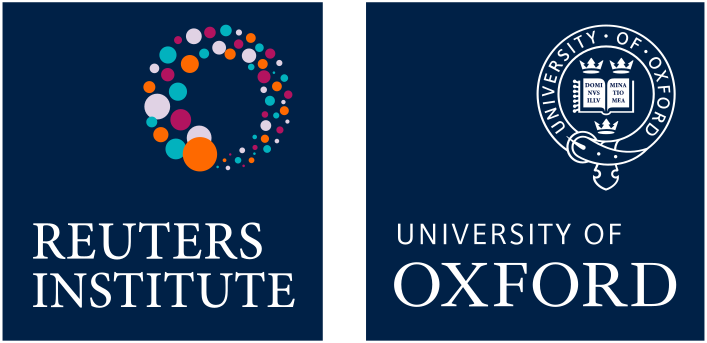
Malaysia
Malaysia’s media market reflects its multiethnic society, its variety of religious beliefs, and its rich tapestry of languages and cultures. However, laws to ensure that media content will not ‘offend’ Malaysia’s diverse groups, especially the majority (65%) Malay-Muslim community, are being used with growing frequency against news outlets.
Over the past year these legal controls have become more evident as action after action was taken against both online media and its users over postings deemed racially and religiously offensive. The term ‘3Rs’ (race, religion, and royalty) is used in Malaysia as shorthand to refer to sensitive topics which need to be treated delicately in the interests of national harmony. But the term was frequently evoked over the past year to control freedom of expression and the media, and a ‘3Rs law’ has been mooted since.
In addition, a new regulatory framework on internet messaging and social media services came into effect on 1 January 2025 which imposes new licensing requirements on these services. Service providers are now subject to licensing if they have 8 million or more users. Licences will be valid for one year and companies must comply with the provisions of the Malaysian Communications and Multimedia Act (CMA) (2000). There are arguably certain provisions in the CMA which are problematic, not meeting international human rights standards.1
The Malaysian media industry itself has had mixed fortunes. Online platforms increasingly dominate a shrinking news media market while traditional outlets, especially print media, struggle economically and in trying to engage with a younger, tech-savvy audience. Our data on news sources show that between 2017 and 2025 print usage in Malaysia has plunged from 45% to 18% of respondents.
But even the oldest and the most successful Malaysian online news portal, Malaysiakini (43% weekly reach in our survey), had to lay off staff as part of its restructuring plan. As they announced in October 2024, ‘We have diligently worked to minimise job losses; however, several reductions and the restructuring of certain functions are inevitable.’2
Elsewhere, media giant Astro Malaysia, which was facing losses last year, swung back into the black with a net profit of MYR46.94m at the end of January 2025.3 Numerous reasons have been given for this quick turnaround, the most compelling being the combination of the strength of new content, its ongoing attempts to listen to its audiences, and the reshaping of its offerings to match audience needs. New programme packages were introduced in late 2024, including Astro One.
Social media remain an important source of news with over two-thirds of Malaysians using them each week. TikTok is the fastest growing network with four in ten (40%) Malaysians now saying they source the short-form video platform for news each week, one of the highest in our survey.
But at the same time, the network is seen as a major threat by the government when it comes to mis- and disinformation, along with Facebook. Despite these concerns, a fact-checking culture has not been widely embraced. There are two prominent fact-checking portals, the government-run Sebenarnya.my and the academia/media/civil society collaboration JomCheck. The new culture of fact-checking is perhaps not surprising in a society that for many decades was under authoritarian governments and is now showing signs of reverting to old, undemocratic practices.
There are some potentially positive developments in the Malaysian media environment, top of which is the passing of the Media Council Bill by both houses of the Malaysian Parliament in February 2025. The Media Council Act will allow the industry’s stakeholders ‘to set and regulate standards and the professional conduct of media practitioners and independent media practitioners’.4
For many decades, the Malaysian media industry was constantly constrained by the state and dictated by repressive laws. The long-running regime then insisted on leading and ‘guiding’ any proposed Media Council. This began to change with the election of a reformist government in 2018 which agreed with industry and civil society proposals to set up a Media Council consisting of and led by media professionals, academia, and civil society. This was novel. There is now some cautious optimism that the industry will be able to regulate itself through this Media Council, reducing government interference and the recourse to repressive media laws.
Zaharom Nain
Director, Allianz Centre for Governance, Faculty of Business and Economics, Universiti Malaya
Changing media
Television and print have both declined substantially since 2017 as news sources. Online and social media are well established as the most widely used sources.
Pay for online news
18%
Trust in news overall
37%
(-)
=26/48
Trust in the news increased significantly in 2021, possibly due to greater dependence on media reports during the pandemic, and remained largely stable ever since. Broadcast brands tend to have higher levels of trust, with many politically aligned national-language and vernacular newspapers often having lower public trust scores.
RSF World Press Freedom Index
88/180
Score 56.09
Measure of press freedom from NGO Reporters Without Borders based on expert assessment. More at rsf.org
Share news via social, messaging or email
38%
Footnotes
1 Article 19 and Centre for Independent Journalism (2024). Social Media Licensing in Malaysia: What do you Need to Know? https://www.article19.org/wp-content/uploads/2024/10/Article-19-Social-Media-Regulation-v1.7.pdf
2 Malaysiakini (11 October 2024), ‘Announcement on Malaysiakini’s Restructuring Plan’. https://www.malaysiakini.com/news/722310
3 Malay Mail (11 December 2024), ‘Astro Returns to Black with Net Profit of RM46.94m in 3Q’. https://www.malaymail.com/news/money/2024/12/11/astro-returns-to-black-with-net-profit-of-rm4694m-in-3q/159567
4 Tarrence Tan et al. (26 February 2025), ‘Parliament Passes Malaysian Media Council Bill’. https://www.thestar.com.my/news/nation/2025/02/26/parliament-passes-malaysian-media-council-bill

